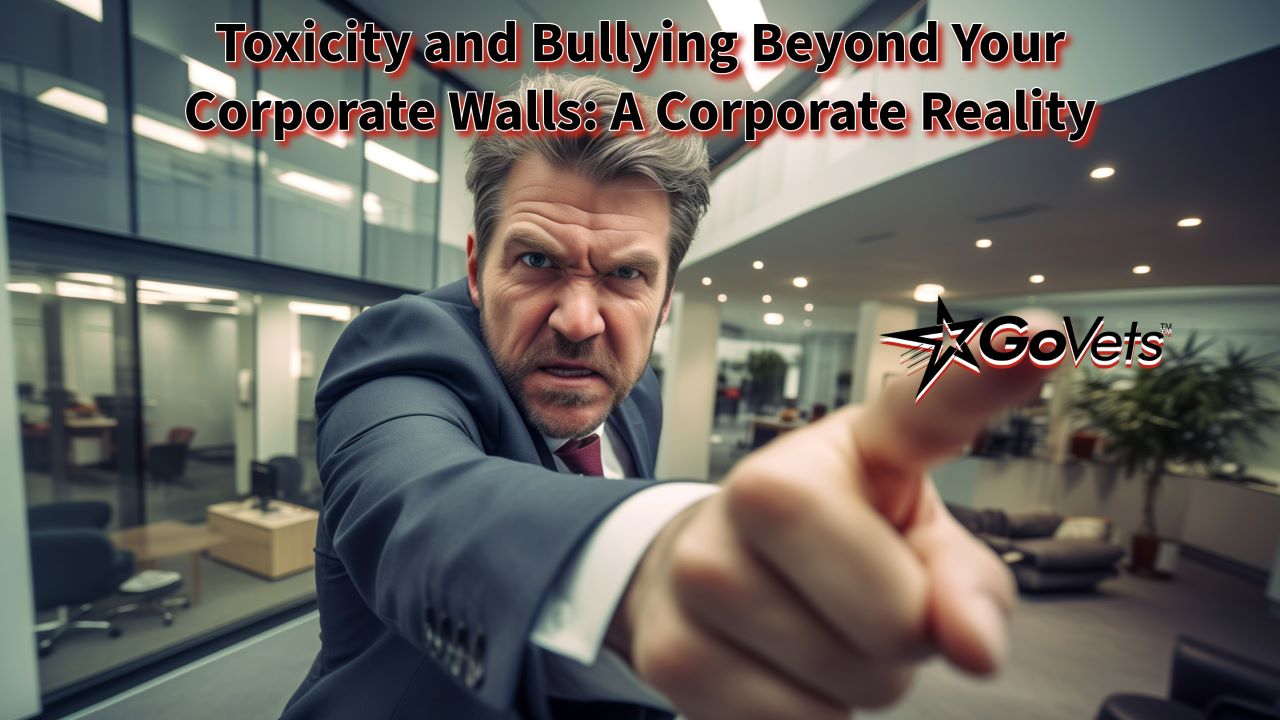Toxicity and Bullying Beyond Your Corporate Walls: A Corporate Reality

Overview
In the corporate realm, much emphasis is placed on cultivating a healthy work environment within the confines of an organization's walls. However, the tendrils of toxicity and bullying often extend far beyond, infiltrating relationships with suppliers, customers, business partners, and other external entities. This comprehensive exploration delves into the nuances of such toxic relationships, drawing parallels with personal relationships and workplace bullying, and offers a robust framework for their identification, prevention, and management.
The Spectrum of External Corporate Toxicity
Toxic relationships in the corporate world can manifest in myriad forms, from suppliers who manipulate terms to customers who perpetually undermine your services (Personio, 2021). These relationships, while crucial for business operations, can morph into sources of significant stress, conflict, and financial loss when they become toxic. The dynamics of these relationships often mirror those found in personal interactions and internal workplace environments, where power imbalances, lack of communication, disrespect, and manipulation lead to a toxic atmosphere.
Identifying the Signs of Toxicity
Recognizing the signs of toxicity in external corporate relationships is the first step toward mitigation. These signs can be subtle or overt, but they invariably erode trust, performance, and loyalty, much like bullying and toxicity erode an individual's well-being in personal relationships.
- Lack of Respect: A fundamental lack of respect can be observed in disrespectful communication, missed deadlines, and unmet commitments, signaling a disregard for the professional partnership. (Architectural Digest, 2021).
- Manipulative Behaviors: Attempts to gain more favorable terms through coercion or deceit are not uncommon, highlighting the manipulative underbelly of some corporate interactions. (Business Journals, 2021).
- Financial Exploitation: Unfair pricing, hidden fees, or exploitative contract terms often characterize financial exploitation in these relationships. (King & Jones, 2021).
- Ethical Misalignment: A divergence in corporate values, especially regarding social responsibility and environmental sustainability, can be particularly telling. (FortuneBuilders, 2017).
Strategies for Prevention and Management
Preventing and managing toxicity in external corporate relationships requires a multifaceted approach, emphasizing due diligence, clear contracts, open communication, and regular reviews. Diversification is key to avoiding overdependence on any single entity, which can create an imbalanced power dynamic ripe for toxicity (Heat Treat, 2023).
Handling Toxicity with Finesse
Addressing toxicity head-on, seeking mediation, re-negotiating terms, leveraging legal support, and implementing boundaries are critical steps in managing toxic relationships. Confronting toxic behaviors as soon as they are identified is crucial for preventing the escalation of toxicity and preserving the health of corporate relationships (Nisar Law Group, 2021).
The Ripple Effects of Unaddressed Toxicity
The consequences of unaddressed toxicity can be far-reaching, impacting not just financial health but also brand reputation, operational efficiency, employee morale, and long-term sustainability. Direct financial losses due to unfavorable terms, litigation costs, or lost business are just the tip of the iceberg (Personio, 2021).
Turning Inward: Recognizing Organizational Toxicity
Organizations must also introspect to ensure they are not the source of toxicity. Regular self-assessment, a cultural shift towards respect, transparency, and ethical behavior, and the establishment of feedback mechanisms are essential. Implementing training programs on ethical business practices and communication can significantly mitigate the risk of becoming a source of toxicity (Workhuman, 2021).
Conclusion
The challenge of managing toxicity and bullying beyond the corporate walls is complex but not insurmountable. By recognizing the signs, implementing robust prevention and management strategies, and fostering a culture of respect and ethical behavior, organizations can navigate these treacherous waters. The goal is not just to avoid becoming entangled in toxic relationships but to build a corporate ecosystem where healthy, productive relationships thrive.
Bibliography
- Personio. (2021). "Do You Have A Toxic Work Environment (And How Do You Fix It)?" Link
- Architectural Digest. (2021). "The 3 Toxic Traits that Spell Trouble for Vendor Relationships." Link
- Business Journals. (2021). "16 Signs a Client Relationship Has Become Toxic Enough to Terminate." Link
- King & Jones. (2021). "Can I Get Rid of a Toxic Business Partner in Court?" Link
- FortuneBuilders. (2017). "4 Ways To Avoid Toxic Business Partnerships." Link
- Heat Treat. (2023). "Does Your Business Suffer from Toxic Customers or Clients?" Link
- Nisar Law Group. (2021). "The Effects of Workplace Bullying and Toxic Workplaces and Actions Employees Can Take." Link
- Workhuman. (2021). "Toxic Work Culture: Signs of Unhealthy Work Environment & How to Fix It." Link

